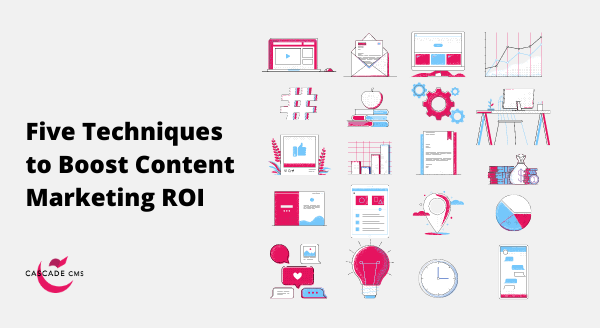ROI is the percentage that shows how much revenue you gained from content marketing in comparison to what you spent. It is directly tied to revenue, and therefore one of the most important measures of content marketing effectiveness. It’s not a vanity goal and one that should be quantified.
These techniques assume a thorough understanding of content marketing and its inclusion in your overall marketing strategy. If you’re creating highly useful, highly relevant content but not seeing the desired return, use these techniques to rank more favorably with Google and increase readership organically.
Remember Google’s Guidance on Building High-Quality Sites
In a 2019 blog post, Google reminded us what its core algorithms seek to reward. It provides guidance on content strategy and optimizing for high SEO scores. The post contains updated advice with a fresh set of questions to ask yourself about your content.
Examples include:
- Does the content provide original information, reporting, research or analysis?
- Does the content provide a substantial, complete or comprehensive description of the topic?
- Does the content present information in a way that makes you want to trust it, such as clear sourcing, evidence of the expertise involved, background about the author or the site that publishes it, such as through links to an author page or a site’s About page?
- Is the content free from spelling or stylistic issues?
- Does the content provide substantial value when compared to other pages in search results?
For the full list, please review Google’s blog post, What webmasters should know about Google’s core updates.
Get to Know Quality Raters’ Guidelines and E-A-T
E-A-T stands for expertise, authoritativeness, and trustworthiness. Quality raters (human beings who give insights on if algorithms provide good results) are trained to use E-A-T criteria to assess content. And Google’s algorithms, which use a mix of many signals to rate great content, are built to align with what a human being thinks is great content.
For this reason, if you understand how raters evaluate content, you might perhaps do better in search.
To show or increase E-A-T, consider bringing contributors on board, updating author bios, and including credentials and relevant education on publicly-visible profile pages. If your pages include advertisements, make sure they don’t blend too much and can be ignored by uninterested viewers.
Authors with less formal expertise can be an authority too. Detailed reviews, forum posts, blog posts, and even life experience are things Google takes into account when considering someone’s authority.
To review Google’s search quality rater guidelines, please review the PDF they share with raters.
Understand ‘Your Money or Your Life’ Page Expectations
If your page contains information that can potentially impact a reader’s happiness, health, or wealth, Google is taking special care to make sure you’re supporting content with references, expert opinions, and supplementary information. An ‘About’ page and a ‘Contact Us’ page are also imperative.
Examples of YMYL pages include: shopping or financial transaction pages, financial information pages, medical information pages, legal pages, and safety information pages. And if your site runs with heavy monetization, be sure to balance with usability.
YMYL pages are cited frequently in Google’s guidelines. They are absolutely held to a higher bar than other types of pages and will be ranked poorly if there is potential to negatively impact a reader.
Answer ‘Know Simple’ Queries with Your Content
Recently, Google added feature snippets to its search results pages, which quickly turned into coveted real estate for marketers and webmasters.
‘Know Simple’ queries are questions that can be answered in a sentence or two. Generally, the response is not controversial and something most people would agree upon.
If you want your web content to appear in featured snippet results, answer common questions with 1-2 sentences in your body content.
Avoid What Makes a Page Low-Quality
Using shortcuts to boost readership is a bad strategy. Google and its raters look for low-quality pages and serve them the lowest ratings. Clues include:
- Redirects that force a visitor through multiple URLs before the final landing page.
- Overuse of keywords, also known as keyword stuffing, that makes text difficult to read.
- Using stolen or copyrighted content. Raters are even trained to use the Wayback Machine.
- Lack of attention to mobile. Pages that are not mobile-friendly receive the lowest ratings.
- Abundance of spam in the comments section. If you abandon your pages, readers will too.
Wrap Up
These techniques are not only reminders for creating good content, they are mechanisms to boost SEO scores. If you’re investing in content marketing, getting your content in front of people when they’re in an active search or buying cycle is a critical part of the equation.
Last Updated: Aug 20, 2020 11:00 AM
